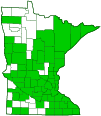eastern purple coneflower
(Echinacea purpurea)
Conservation • Description • Habitat • Ecology • Use • Distribution • Taxonomy
|
|
|||||||||||||
Description |
Eastern purple coneflower is an exotic, erect, 20″ to 48″ tall, perennial forb that rises on one to a few stems from a short, vertical rootstock and fibrous roots. The stems are erect or ascending, usually brownish-green, round, finely ridged, and branched or unbranched. The are sometimes hairless but are usually sparsely to moderately covered with stiff, appressed to ascending, 1 ⁄32″to 1 ⁄16″ long hairs. Basal leaves are long stalked, the leaf stalks up to 6¾″ in length. The blades are narrowly to broadly egg-shaped, usually rounded or heart-shaped at the base, and long tapered to a sharp point at the tip. They are up to 11¾″ long and up to 4¾″ wide, about 1½ to 5 times as long as wide. They have usually 5, sometimes 3, prominent main veins. The upper and lower surfaces are rough to the touch and moderately to densely covered with stiff, appressed to loosely appressed hairs. The margins are usually irregularly toothed, rarely untoothed, and usually have a fringe of ascending hairs. Stem leaves are alternate. They are short tapered to more or less rounded at the base but otherwise similar to basal leaves. The inflorescence is a solitary flower head on a long stalk at the end of the stem. The flower stalk is leafless, 3″ to 10″ long, and covered with scattered hairs. At the base of the flower head a whorl of 15 to 30 bracts in three or four overlapping series forming a ½″ to 1½″ in diameter, cup-shaped involucre. The bracts of the involucre (phyllaries) are green, linear to lance-shaped, 5 ⁄16″ to ⅝″ long, sparsely to moderately hairy, and fringed with hairs. The outermost phyllaries are bent backward above the middle. The flower heads are 2½″ to 4″ in diameter. There are 8 to 21 ray florets and 200 to 300 or more disk florets. The disk is flattened when young, becoming cone-shaped as it ages. It is 9 ⁄16″ to 1¾″ tall and ¾″ to 1 9 ⁄16″ in diameter. The ray florets are pink to purplish or rarely white, 1¼″ to 3⅛″ long, ¼″ to ¾″ wide, and spreading to somewhat drooping at flowering time. The disk florets have five petals fused at the base into a yellow to green tube then separated at the tip into five dark purple lobes. Each disk floret is subtended by a thin, dry, bract. The bracts are ⅜″ to 9 ⁄16″ long, hardened, and sharply pointed with a spine-like tip. They are noticeably longer than the disk corollas. They are usually dark purple at the tip. They remain on the plant at fruiting time. The fruit is a dry, wedge-shaped, 4-angled in cross section, slightly flattened, ⅛″ to 3 ⁄16″ long seed chamber (cypsela) with a crown of feather-like hairs attached to one end. It is tan toward the base, banded with dark brown toward the tip. |
Height |
20″ to 48″ |
Flower Color |
Pink to purplish ray florets, purple disk florets |
Similar Species |
Narrow-leaved purple coneflower (Echinacea angustifolia var. angustifolia) is a shorter plant, no more than 27″ in height. The leaves are egg-shaped, narrower, and 5 to 20 times as long as wide. The leaf margins are untoothed. The hairs on the leaf surfaces are spreading, not appressed. The flower heads are smaller, no more than 2″ in diameter. |
Habitat |
Dry to moderate moisture. Prairies, woods. Full or partial sun. |
Ecology |
Flowering |
June to October |
Pests and Diseases |
|
Use |
|
Distribution |
||
|
Sources |
|
| 8/9/2024 | ||
Nativity |
||
Native south and east of Minnesota, including Iowa and Wisconsin. Introduced, cultivated. Sometimes escapes cultivation. |
||
Occurrence |
||
Common in recent prairie restorations and plant demonstration areas in city, county, and state parks. Eastern purple coneflower is not native to Minnesota. It is a cultivated plant sold in nurseries. The seeds are often included in wildflower mixes purchased by city, county, regional, and even state parks. As a result, this plant can often be found in parks in Minnesota, especially in recently restored prairies and in showcase plantings near visitor centers. |
||
Taxonomy |
|
Kingdom |
|
Division |
Tracheophyta (Vascular Plants) |
Subdivision |
Spermatophytina (Seed Plants) |
Class |
|
Order |
Asterales (Sunflowers, Bellflowers, Fanflowers, and Allies) |
Family |
Asteraceae (Sunflowers, Daisies, Asters, and Allies) |
Subfamily |
Asteroideae |
Supertribe |
Helianthodae |
Tribe |
Heliantheae (Sunflowers and Allies) |
Subtribe |
Zinniinae |
Genus |
Echinacea (coneflowers) |
Subordinate Taxa |
|
|
|
Synonyms |
|
Brauneria purpurea Echinacea intermedia Echinacea purpurea f. ligettii Echinacea purpurea f. purpurea Echinacea purpurea ssp. serotina Echinacea purpurea var. arkansana Echinacea purpurea var. purpurea Echinacea purpurea var. serotina Echinacea serotina Helichroa alba Helichroa amoena Helichroa crocea Helichroa elatior Helichroa fusca Helichroa fuscata Helichroa linnaeana Helichroa purpurea Helichroa uniflora Lepachys purpurea Rudbeckia aspera Rudbeckia hispida Rudbeckia purpurea Rudbeckia purpurea var. purpurea Rudbeckia purpurea var. serotina Rudbeckia serotina |
|
Common Names |
|
eastern purple coneflower echinacea hedgehog coneflower purple coneflower |
|
Glossary
Bract
Modified leaf at the base of a flower stalk, flower cluster, or inflorescence.
Corolla
A collective name for all of the petals of a flower.
Cypsela
A dry, one-chambered, single-seeded fruit, formed from a single carpel, with the seed attached to the membranous outer layer (wall) only by the seed stalk; the wall, formed from the wall of the inferior ovary and also from other tissues derived from the receptacle or hypanthium, does not split open at maturity, but relies on decay or predation to release the contents.
Involucre
A whorl of bracts beneath or surrounding a flower, flower head, or flower cluster.
Linear
Long, straight, and narrow, with more or less parallel sides, like a blade of grass.
Phyllary
An individual bract within the involucre of a plant in the Asteraceae family.
Visitor Photos |
||
Share your photo of this plant. |
||
This button not working for you? |
||
Kirk Nelson |
||
 |
|
|
Views of the Rachel C. Lilly Preserve, Dodge Nature Center. A variety of plants and flowers, including a large patch of rattlesnake master found in the northeastern part of the property. |
|
|
Lynn Rubey |
||
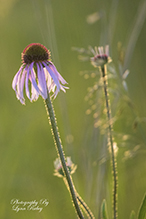 |
||
Echinacea Purpurea also known as Eastern Purple Coneflower in sunset in The Big Stone National Wildlife Refuge, Lac qui Parle County, Mn. |
||
MinnesotaSeasons.com Photos |
||
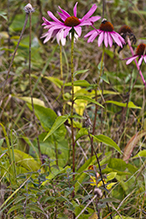 |
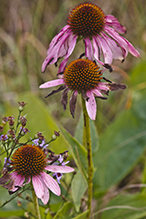 |
|
Plant |
Inflorescence |
|
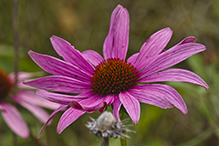 |
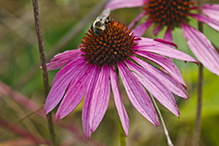 |
|
| Flower Head | Flower Head | |
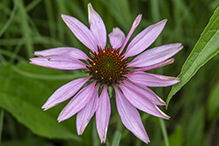 |
||
| Flower Head | ||
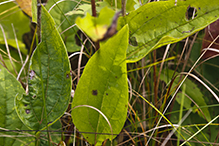 |
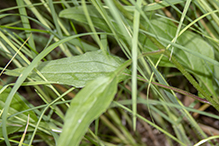 |
|
Leaves |
Leaves |

Slideshows |
Echinacea purpurea |
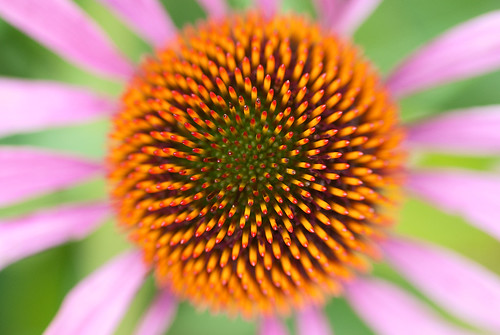
|
About
Rød solhatt, Purple coneflower |
Echinacea purpurea - Purple Coneflower |

|
About
Asteraceae - Aster Family |
Echinacea |
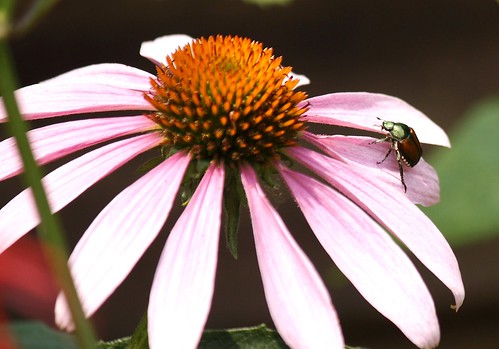
|
About
Purple coneflower Echinacea purpurea |
Echinacea purpurea (Purple Coneflower) |

|
Plant portrait - Purple coneflower (Echinacea purpurea) |
About
Published on Feb 26, 2013 A detailed look at the life cycle of Purple coneflower (Echinacea purpurea). These images can aid in identifying this plant during all seasons of the year. |

Visitor Videos |
||
Share your video of this plant. |
||
This button not working for you? |
||
|
Other Videos |
||
Echinacea purpurea - Purple Coneflower |
About
Published on Aug 26, 2012 Echinacea purpurea - Purple Coneflower is a popular hardy perennial used in much of North America. It is hardy to -40F. Echinacea purpurea has a long bloom period from late Spring through Fall in most areas. To learn more please watch the video. For information on many other plants please explore this YouTube channel or visit www.designwithplants.com |
Echinacea, Cone flower time lapse |
About
Published on Sep 3, 2012 Echinacea purpurea. Cone flower time lapse Filmed over a period of 7 days. Interval 1 frame every 6 minutes. Music 'Moon Cloud' by Paul Mottram |
Echinacea Purpurea |
About
Published on Oct 5, 2012 Echinacea is one of the most popular herbs in America today. This Native American medicinal plant called echinacea is named for the prickly scales in its large conical seed head, which resembles the spines of an angry hedgehog (echinos is Greek for hedgehog). Archaeologists have found evidence that Native Americans may have used echinacea for more than 400 years to treat infections and wounds and as a general "cure-all." Throughout history people have used echinacea to treat scarlet fever, syphilis, malaria, blood poisoning, and diphtheria. Although this herb was popular during the 18th and 19th centuries, its use began to decline in the United States after the introduction of antibiotics. Echinacea preparations became increasingly popular in Germany throughout the 20th century. In fact, most of the scientific research on echinacea has been conducted in Germany. Today, people use echinacea to shorten the duration of the common cold and flu and reduce symptoms, such as sore throat (pharyngitis), cough, and fever. Many herbalists also recommend echinacea to help boost the immune system and help the body fight infections. Read more: http://www.umm.edu/altmed/articles/ec... |
Purple Coneflower - Echinacea purpurea at Ion Exchange, Inc. |
About
Uploaded on Aug 1, 2011 Earthyman views Purple Coneflower (Echinacea purpurea) blooming at Ion Exchange in Northeast Iowa http://ionxchange.com |
Echinacea purpurea |
About
Published on Nov 12, 2014 Kaunopunahattu. Purple coneflower. |

Visitor Sightings |
||
Report a sighting of this plant. |
||
This button not working for you? |
||
Kirk Nelson |
Location: Dodge Nature Center A variety of plants and flowers, including a large patch of rattlesnake master found in the northeastern part of the property. |
MinnesotaSeasons.com Sightings |
||

|
Created: Last Updated: © MinnesotaSeasons.com. All rights reserved. |
